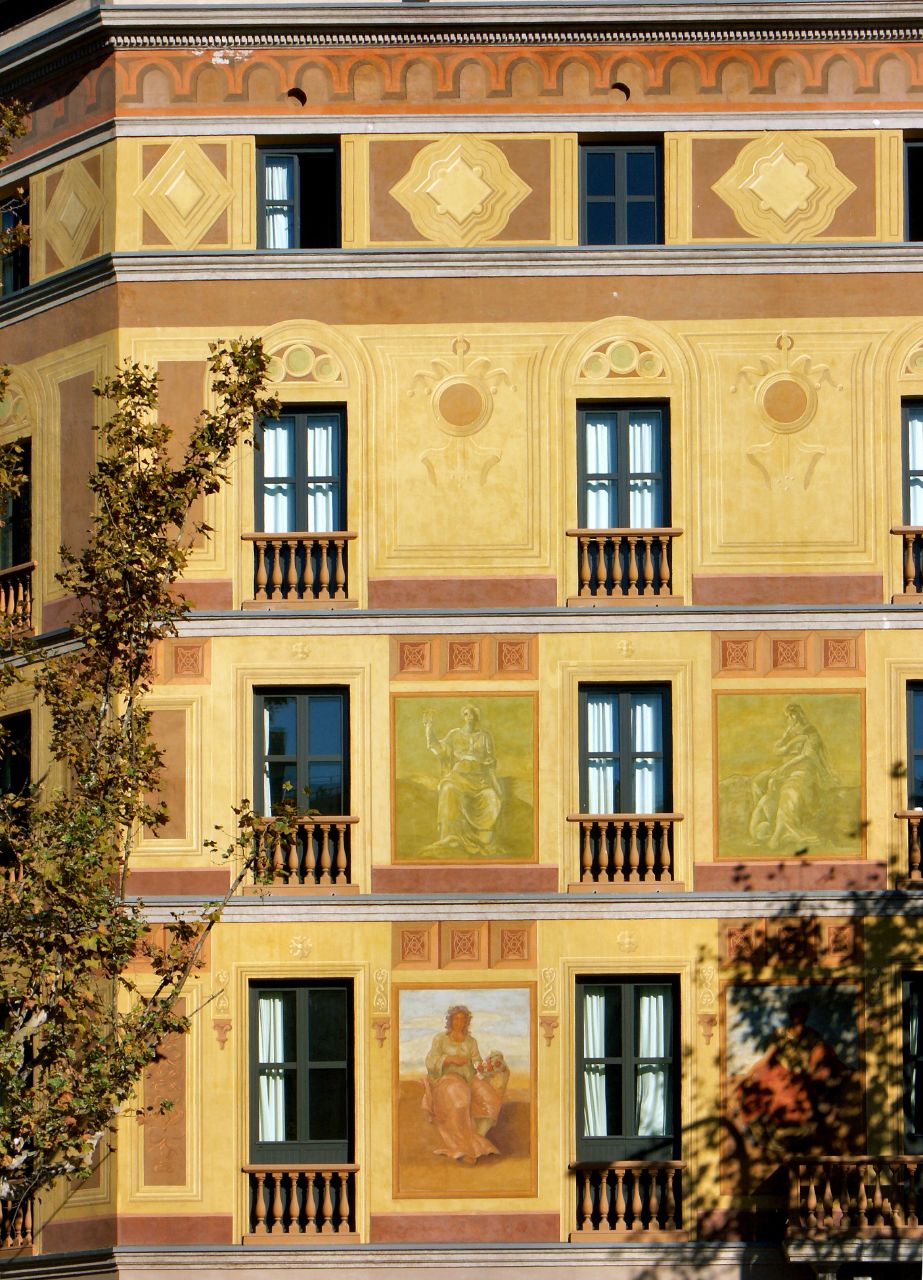#2559. Painted Mediterranean Facade with Allegorical Frescoes
The image showcases a magnificent example of decorative wall painting in the Italian trompe-l'œil tradition. The building facade is divided into four tiers, each featuring its own distinctive decorative treatment.
The architectural composition of the facade is executed in ochre-yellow and terracotta hues, characteristic of Mediterranean architectural tradition. The upper tier is adorned with geometric patterns featuring diamond and square motifs, framed by a decorative frieze with arched elements.
The middle tiers are decorated with classical paintings depicting allegorical figures, presumably representing ancient virtues. Particularly expressive are the frescoes on the third and fourth tiers, which feature seated female figures in classical drapery, rendered in pastel tones.
Windows are framed by decorative balustrades with turned balusters, lending elegance and rhythm to the facade. The painting technique creates the illusion of three-dimensional architectural elements – pilasters, cornices, and medallions, which is a characteristic feature of Italian facade painting from the 16th-18th centuries.
On the left, an ornamental plant is visible, creating a natural contrast to the geometric orderliness of the facade. The play of light and shadow emphasizes the depth and texture of the decorative elements, enhancing the impression of the architectural ensemble.
